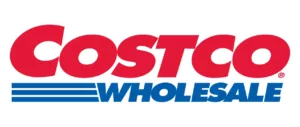During my first week on the cold station at a busy taquería, I thought I had everything under control. When service finally slowed, my lead asked me to check the sanitizer strength, and I froze. That night, I signed up for a Spanish-language food safety class on my phone, learned exactly which test-strip color to look for, and walked into work the next day with quiet confidence.
That is the boost the proper training can give every Spanish-speaking food worker. It also helps managers build safer kitchens without having to manually translate every rule or repeat the exact instructions on every shift.
This guide walks Spanish-speaking team members and their managers through the simple steps to earn a food handler’s certificate in Spanish quickly, confidently, and entirely online.
Who Needs Training And Why Spanish Access Matters
In many states and counties, entry-level food workers are required to complete a short training course and pass an exam before they can work independently with food. These rules protect both guests and workers, as well as businesses, from avoidable mistakes, violations, and closures.
When training is fully available in Spanish, more teammates pass on the first try, managers spend less time translating or reteaching, and guests notice cleaner stations and safer habits. Spanish access is not an extra perk. It is the bridge between memorized rules and real behavior during a Friday night rush.
How To Get Your Food Handler Certification In Spanish Online
Earning your credential online is straightforward and friendly for busy schedules. Start by choosing a recognized provider that clearly offers a comprehensive Spanish course, including lessons, an exam, a certificate, and a wallet card.
Create your account using your legal name and a reliable email address. Whatever you type here will be printed on your certificate and card, allowing managers to match it to HR records without delay.
Work at your own pace. Most learners complete the task in 60 to 120 minutes on a phone or laptop. Look for Spanish audio with captions so you can listen while riding the bus or taking a break, instead of reading long blocks of text on a small screen.
When you feel ready, take the exam. Many platforms allow quick retakes and highlight the topics you should review. After you pass, download the certificate and card as PDFs, save them to your phone, and email a copy to your manager. If your local health department requires a printed copy on-site, post it at work and keep the card with your ID.
Online And Classroom Options For Spanish Speakers
Online courses are particularly well-suited for kitchens with rotating schedules and long commutes. Workers can log in from a phone, complete a few modules during a break, pause, and return later without losing progress. Modern platforms are designed for mobile use, featuring simple buttons and concise quizzes that don’t feel clunky on a small screen.
In-person classes are helpful for brand-new teams, locations with weak Wi-Fi, or businesses that prefer everyone to learn together. If you choose classroom training, confirm that the instructor, slides, and exam are fully available in Spanish so no one is guessing about key terms during the test.
What To Look For In A Strong Spanish Course
An intense course makes it easy for learners to choose the Spanish track and stay engaged from the first screen to the final quiz. Look for transparent labeling, such as a “Food Handler’s Training Course (in Spanish)” option on the provider’s site, along with simple instructions for switching language settings if needed.
Some providers describe their program as a food handling course in Spanish on marketing pages or dashboards. The exact wording matters less than the quality of the content. You want realistic kitchen scenarios, not just slides full of text, and you want each module to conclude with a brief knowledge check so workers know what they actually learned.
For managers, the right tools are just as essential. A good platform offers instant certificate downloads, a dashboard that shows who has enrolled or passed, and clear notes on which states or counties the course is designed to satisfy. Reliable support in Spanish, whether via chat or email, helps prevent logins and payment issues from slowing the rollout.
Skills You Will Practice, Not Just Memorize
The best Spanish-language programs focus on practical skills that line cooks, dishwashers, and servers use daily. Expect clear examples, short videos, and interactive questions about topics like:
- Personal hygiene beyond basic handwashing, including nail care, bandaging cuts, jewelry rules, hair restraints, and when to change gloves
- Cross-contamination control using color-coded cutting boards, separate utensils, and clean-as-you-go habits at every station
- Time and temperature control for receiving, cold holding, hot holding, cooling in shallow pans, and reheating foods to safe levels
- Cleaning and sanitizing, including how to use test strips, how long sanitizer must stay on a surface, and when to change buckets during a rush
- Allergen awareness, familiar sources of allergens, preventing cross-contact, and what to say if a guest reports a reaction
- Receiving and storage basics, such as checking deliveries at the door, using FIFO labeling, and keeping dry storage within safe humidity and temperature ranges
By the end of the course, you are not just prepared to pass a quiz. You move faster on the line with fewer second guesses.
Cost, Timing, And Turnaround
Most Spanish-language food handler courses can be completed in under two hours. Prices are usually low enough that a single shift of tips or wages easily covers the fee.
Certificates and cards are typically available immediately after you pass the exam. If your county requires a printed copy on site, you can post it the same day. Many managers send new hires a short checklist before their first solo station and ask them to complete the course and exam in advance.
An Employer Rollout Playbook That Actually Works
Think of certification as part of mise en place for your team. When you set it up correctly once, it continues to work for every new hire.
Use these steps to make the process smooth for mixed shifts and mixed devices:
- Send a bilingual kickoff message in English and Spanish that includes the course link, expected time to complete, deadline, and contact person for questions
- Offer a quiet, paid 60 to 90-minute window during prep or a slower afternoon so staff without reliable home internet can participate.
- Standardize how names appear by asking workers to use the same legal name and email address for payroll, HR, and their course account.
- Celebrate completions with a “Safety Wins” board or small rewards, like first pick of the station for the week.
- Track renewals in your scheduling or HR app so you can send reminders before certificates expire
Common Roadblocks And How To Avoid Them
Most delays stem from minor, avoidable issues that are easy to fix once you know to look out for them.
- Nicknames on certificates can confuse when inspectors compare records to ID cards. Always use full legal names.
- Some counties recognize only certain providers, so it pays to confirm accepted options with your local health department before purchasing a course.
- Skipping practice quizzes might save a few minutes now, but it often leads to lower scores and more retakes later. Encourage teams to complete every knowledge check.
- Lost files are a common problem. Make it standard practice to save certificates to a shared digital folder and to the provider’s dashboard, then print a spare card for each worker.
Calling out these issues early can save hours of back-and-forth when inspections or audits come around.
Keeping Records, Renewals, And Inspection Proof Organized
Good recordkeeping protects both your team and your business. A simple system includes three layers:
- A printed binder near the office with copies of current certificates
- A shared digital folder organized by location or team, with PDFs sorted by name
- The provider’s manager dashboard, if available, where you can verify completion dates and reprint files
Many inspectors accept a digital copy shown on a phone or tablet, but local rules vary. Renewal windows also differ by jurisdiction, often on a multi-year cycle. Reviewing certificate dates quarterly and sending reminders approximately 30 days before expiration ensures everyone stays current without last-minute scrambling.
Accessibility Features That Support Spanish Learners
Workers learn and remember more when the course is designed specifically for them in Spanish from the ground up. Helpful features include:
- Full Spanish voiceover, not just subtitles over English videos
- Interactive practice with instant feedback on hot and cold holding, cross-contact, and cleaning tasks
- Plain-language summaries at the end of each module that recap the most important points
- Mobile-first design so text, buttons, and quizzes are comfortable to use on a small phone screen.
These details turn abstract guidelines into habits, like changing gloves after touching a phone or logging soup temperatures without guesswork.
Certificate, Card, And Course: How They Fit Together
When training providers talk about “getting certified,” they are usually referring to three pieces that work together: the learning you complete, the document you receive, and the card you carry.
- The certificate is the official PDF you download after passing the exam. Many workplaces post it in the back of the house or near the office.
- The card is the miniature version you keep with your ID. Many platforms automatically generate a food handler’s card in Spanish, allowing workers to print it on standard paper and trim it to fit a wallet.
- The course is the training content itself, including videos, readings, and quizzes that prepare you for the test.
In practice, you complete the course, pass the exam, download the certificate, and then keep the card handy for supervisors and inspectors.
Key Spanish Terms You Are Likely To See
Course dashboards, receipts, and PDFs do not always use the exact wording; however, a few Spanish phrases appear frequently. Knowing them makes it easier to search files and confirm requirements with managers or health departments.
- Certificado de Manipulación de Alimentos usually refers to the official document that proves you completed the training and exam.
- A Tarjeta de Manipulador de Alimentos is typically a wallet-sized card that indicates you are authorized to handle food.
- Curso de Manipulación de Alimentos describes the class or online program that prepares you for the assessment.
Using the exact Spanish terms on rosters and in folders helps everyone locate the correct files more quickly.
Make a Safety Routine Without Slowing Service
When Spanish-language training is part of day-one onboarding, safe habits become normal rather than extra work. One clear link, a small paid window to complete the course, and a consistent system for posting and saving certificates can prevent far bigger problems when inspectors arrive or the dining room gets busy.
Investing a little time now strengthens confidence on the line, protects your guests, and supports every team member who prefers to learn in Spanish.


















